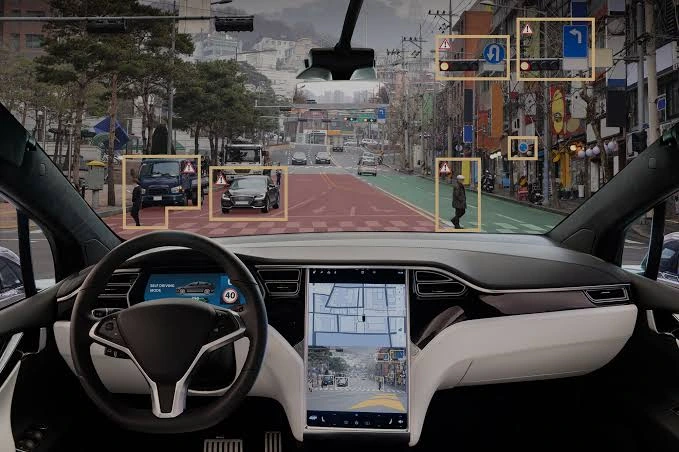Self-driving cars, once a futuristic concept, are now a reality. With companies like Tesla, Waymo, and Cruise developing autonomous vehicle technology, these cars are already being tested—and in some cases, even used—on public roads. But despite the excitement, a critical question remains: Are self-driving cars truly safe?
In this article, we’ll explore how self-driving cars work, their safety benefits, potential risks, and real-life examples of their success and failures.
How Do Self-Driving Cars Work? 🛠️
Self-driving cars use a combination of artificial intelligence (AI), sensors, cameras, LiDAR (light detection and ranging), and GPS to navigate roads without human input. These vehicles rely on algorithms to detect pedestrians, traffic signals, and obstacles, making real-time decisions to ensure safety.
Autonomous cars are classified into five levels:
Level 0: No automation (fully controlled by a human driver).
Level 1-2: Partial automation (driver assistance like cruise control or lane-keeping assist).
Level 3: Conditional automation (car can drive itself in certain conditions but requires human intervention).
Level 4: High automation (can drive itself in most situations but may require a human backup in extreme conditions).
Level 5: Full automation (no human intervention needed at all).
Currently, most self-driving technology falls within Level 2 or Level 3, meaning human oversight is still necessary.
The Safety Benefits of Self-Driving Cars ✅
Advocates of autonomous vehicles argue that they can reduce accidents caused by human error, which accounts for over 90% of traffic accidents worldwide. Some key safety benefits include:
🚦 Reduced Drunk and Distracted Driving: Self-driving cars don’t get tired, intoxicated, or distracted like human drivers.
🚗 Predictable Decision-Making: AI follows traffic rules strictly, reducing reckless driving incidents.
⚙️ Advanced Sensors: LiDAR and radar can detect obstacles faster than human reaction times.
Real-Life Example:
- Waymo, Google’s self-driving car company, has logged over 20 million miles with very few accidents, most of which were caused by human drivers colliding with the autonomous vehicle.
The Risks and Concerns of Self-Driving Cars ⚠️
Despite their advantages, self-driving cars are not 100% accident-proof. Some challenges include:
🔄 Software Malfunctions: AI is only as good as its programming, and errors can lead to miscalculations in traffic.
🌧️ Weather Conditions: Rain, snow, and fog can interfere with sensors, making navigation difficult.
🚘 Ethical Dilemmas: If a crash is unavoidable, should the AI prioritize saving its passengers or pedestrians?
Real-Life Example:
In 2018, an Uber self-driving test vehicle in Arizona struck and killed a pedestrian because its sensors failed to recognize her. This raised serious concerns about AI’s ability to handle unpredictable situations.
Are Self-Driving Cars Safe? 🏁
The safety of self-driving cars depends on the technology, regulations, and public trust. While they have the potential to significantly reduce traffic accidents, they are not yet perfect.
What Needs to Happen?
🔧 Improved AI Training: More data and real-world testing are needed to improve decision-making.
📜 Stronger Regulations: Governments must establish clear rules for self-driving car safety and liability.
👩💻 Human Oversight: Until technology reaches Level 5 automation, human drivers must remain alert and ready to take control.
Conclusion: The Road Ahead 🚦
Self-driving cars offer exciting possibilities, but safety remains a concern. While companies continue to refine the technology, human supervision is still necessary to prevent accidents. As we move toward a future of fully autonomous vehicles, the question remains: Would you trust a self-driving car with your life?
🚘 What are your thoughts on self-driving cars? Would you ride in one today? Let us know in the comments!
